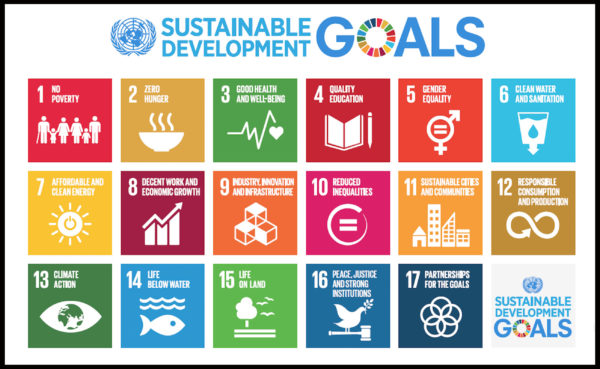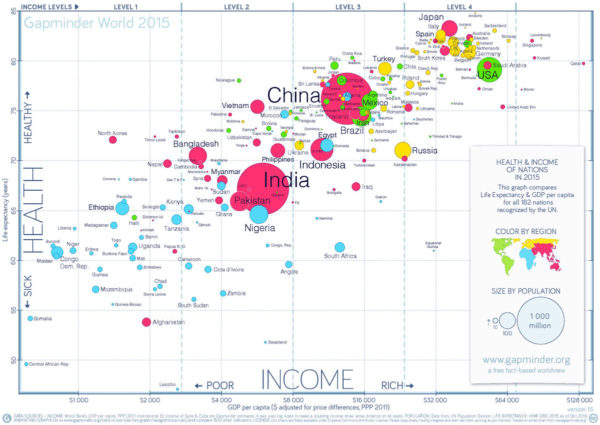Collaboration Journal
Special Feature
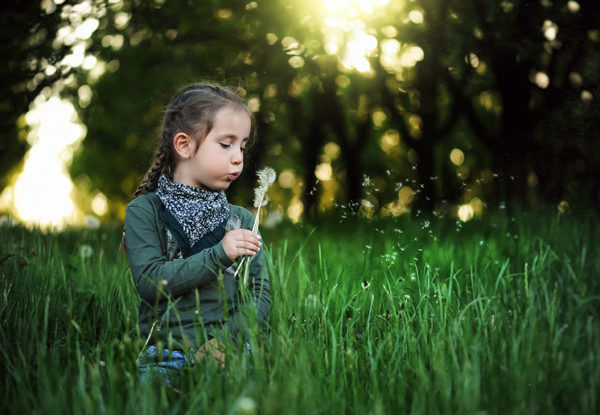
The Time Has Come
PATRICK M. BELDIO
The blossom of a new creation from the humus of ecological crisis
TODAY WE ARE WITNESSING both a planetary dissolution and a planetary progress that is largely unnoticed. Such an experience can be captured, though imperfectly, in the Sanskrit word pralaya. Although the denotation of pralaya means “complete annihilation,” it also connotes “excessive rest,” which signals something positive.1 The Mother offered supportive ways to interpret this experience of both annihilation and new life in our global context. As readers of this journal will know, along with Sri Aurobindo, she claimed that the oppositions to growth processes on our planet will take hundreds of years to resolve into what they called a “new supramental creation” and a new human species that the Mother called “the new being.”2 She agreed in principle with dharmic traditions that at least six mahāpralayas have occurred in the past, but that owing to the universal work she did with Sri Aurobindo, this seventh time our universe will not be destroyed but “will go on progressing, without retreat. This is why, in fact, there is in the human being that need for permanence and for an uninterrupted progress—it’s because the time has come.”3
Not only this, she said that the very growth dynamic that has characterized the old creation will eventually change from one that uses opposition to achieve progress to one that will no longer require conflict; it will be “eternally progressive.”4 In this short space I want to focus on the Mother’s experience of these issues considering her recognition that asuric or “hostile” forces are in fact invaluable aids to the divine work for a new creation and human species.5 Her understanding and work with flowers, which her devotees see as archetypal labors on behalf of all reality, symbolize this understanding. Hopefully, by joining this way of seeing reality, what might be called “a flower-based” worldview, we can see the killing nature of our times in a new light, inspiring the aspiration and courage to set out on the “supreme adventure,” as she called it, to aid the divine labor to sprout a longed-for yet vulnerable new creation, even as we give end-of-life care to an old creation and an old humanity that have begun to fertilize the next phase of growth.6
A Fact-Based World View
BEFORE I DESCRIBE THE MOTHER’S WORK WITH FLOWERS, it is helpful to understand that she and Sri Aurobindo were not alone in their diagnosis of what they called “the old creation” and the positive prognosis for “the new creation.” Meher Baba (1894–1969) was a key collaborator that I do not have space here to review.7 He worked tirelessly from 1922 to 1969, as he claimed, to clear the world of old impressions or saṃskāras so that a new “Life,” “new humanity,” and “new world culture” would manifest over the next few hundred years, just as the Mother and Sri Aurobindo predicted.8 His work to ensure the materialization of this vision spans the same period that begins with the founding of the Sri Aurobindo Ashram in 1926 and ends with the Mother’s passing in 1973. In this time frame, we can also see scientific evidence that corroborates many important features of this spiritual perspective if one can view the evidence dispassionately.
The Swedish physician and scholar of international health, Hans Rosling (1948–2017), coordinated much of these evidentiary data into helpful kinetic bubble charts and more importantly, interpreted the data in intelligent ways. He wrote that the most salient threats to our life on planet earth are global pandemics, financial collapse, world war, climate change, and extreme poverty.9 Arguably, one might add casteism, as the work of Isabel Wilkerson shows.10 However, as the Mother knew well, since the beginning of the 20th century we have been living with these threats simultaneously, and with every passing year in the 21st, their presence intensifies and combines in ways that make it clear that we cannot solve any unless we solve all.
Rosling founded the Gapminder Foundation with his son and daughter-in-law, Ola Rosling and Anna Rosling-Rönnlund. Their objective is to fill our mental “gaps” in knowledge, that is, to help us understand exactly what the global threats are and how to measure their impacts so that we are not left in the dark, or worse, led by this ignorance to fight imagined threats with real resources. Their goal is simple: to help us all share a “fact-based” worldview while we combat a “overdramatic” worldview that cries wolf. The first goal helps us to build on real gains and the second helps us to not inadvertently add to our losses. The foundation gathers statistical data from 1800 to today using reliable sources from every nation, measures ignorance about it, and provides practical ways to overcome this ignorance so that we can achieve the United Nations’ 17 sustainable development goals.11
Taking this longer view beginning in 1800, when one measures the development of phenomena like greenhouse gas emissions, threatened species, poverty, violence, education for girls, or life expectancy, we find that we are living through both a planetary destruction and an improvement; but the improvement far outweighs the destruction in many important areas. This is especially noticeable in the almost 50-year-timeframe (1926–1973) during which the Mother and Sri Aurobindo witnessed the inchoate new creation and new being brought about by what they called “the supramental manifestation,” which was their name for a new “descent” of the universal Mother’s wisdom, strength, harmony, perfection, and bliss on earth.
To take a country that the Mother knew well: according to the data gathered by Gapminder, the average life expediency in India in 1926 was about 28 years. In 1973 it was about 52 years and in 2018 it grew to about 70 years. Indian women had about six babies on average in 1926. In 1973, they had about five and as of 2018, the average dramatically decreased to two children. As Hans Rosling was fond of saying, until recently human beings died in balance with nature when having six children was the global average and four were expected to perish in the first few years. Now, after a mere century, we are living in balance with nature since the majority of mothers on earth give birth to two children who have a good chance at quality education even if the child is a girl, and to live lives freed from extreme poverty ($2/day), sexual harassment, and violence. It is crucial to note that this evidence is about trends and not isolated events. Rosling was amazed by this data, calling it “the secret silent miracle of human progress” comprised of “fundamental improvements that are world-changing but … too slow, too fragmented, or too small one-by-one to ever qualify as news.”12
There are countless issues that one can explore on the Gapminder website, and I recommend that the reader take the tests they offer that measures ignorance about the world and to investigate any topic of interest using their helpful tools and videos. It is fun in this case to flunk a test! The Roslings argue that trends are not guaranteed to always lean positive or negative, for indeed we have maintained positive trends with vigilance and constant measurement; and when there is political will, vigilance, and constant measurement, negative trends can be reversed. However, in their view, we also still need more reliable data and a shared understanding about how all the risks to our planetary health are linked.
Besides these issues, one of the most difficult obstacles to achieving the United Nations sustainable development goals for them is ignorance about the encouraging trends. The Roslings write that such unfamiliarity causes unnecessary worry, an overdramatic worldview, and bad decision making that disrupts progress. This mental susceptibility becomes even more problematic when a given issue is trending downwards. Instead of defining a given problem with clear-eyed facts, the overdramatic worldview and worry of the mind drives unhelpful solutions, divisive blaming, or worse, conspiracy theories that perpetuate non-responsive or confused action, as we witness now in the Covid responses to mask mandates and life-saving vaccines. Issues that have to do with the climate crisis are also of this nature. The Rosling’s “fact-based” worldview is a helpful tool to train the mind to solve its problems at its own level. This means mitigating against what they call “the ten dramatic instincts” that the mind developed in its evolutionary past that have outlived their usefulness today for they keep us unable to interpret our reality intelligently.13
A Flower-Based Worldview
FROM THE PERSPECTIVE OF INTEGRAL YOGA, the Gapminder Foundation rightly intuits that the difficulty of our context is the weaknesses of the human mind. However, the Mother’s experience was that the trouble is even more severe: the weaknesses are chronic. There is no hope for a mental solution, even though we need to sharpen that tool in the process of our growth as a species. Late in her life she said, “You understand, [the mind and vital] are a phase in the universal development, and they will be … they will fall off as instruments that have outlived their usefulness.”14 She found that filling mental gaps is an endless work that must be replaced with a completely new authority; one that has no gaps. In addition to the mental “fact-based” worldview discussed above, the Mother might encourage a “flower-based” worldview. This is a vision of the world based on what any flower demonstrates: a spontaneous responsiveness to light and the consequent blossoming in perfection and beauty.
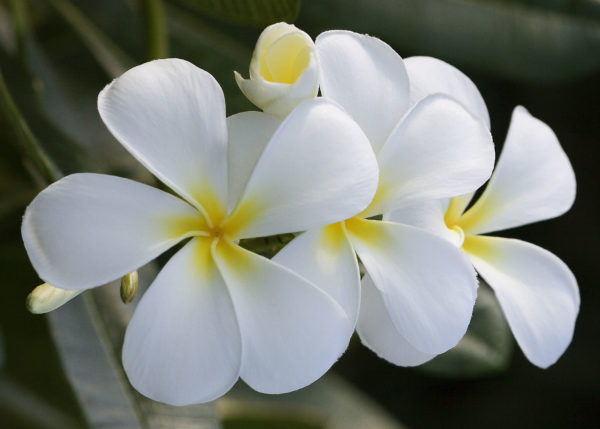
For her, what is centrally important about flowers is their automatic love and longing for the sun, which is the yogic labor of “aspiration” in plant form. She said, “plants have more [aspiration] in their physical being than man. Their whole life is a worship of light. Light is of course the material symbol of the Divine, and the sun represents, under material conditions, the Supreme Consciousness. The plants have felt it quite distinctly in their own simple, blind way. Their aspiration is intense, if you know how to become aware of it.”15 As the Mother observed, this longing leads to special forms of expression in organic life, which is the stage of the evolving divine or “psychic” presence in which the Mother said, “the vital element comes in … which gives to flowers the sense of beauty.”16 And “in the physical world, of all things it is beauty which best expresses the Divine. The physical world is the world of form, and the perfection of form is beauty.”17
The Mother’s use of flowers with her students was a practice to awaken this kind of intense longing, awareness, and expression in an intentional, human way, which can lead to a new form of consciousness and integral way of life, one that is beyond the inherent limits or gaps of the mind; one that is “supra-mental.” To achieve this “birthright,” as she called it, the Mother said, “Let us do our best to prepare the coming of the New Being. The mind must fall silent and be replaced by the Truth-Consciousness—the consciousness of details integrated with the consciousness of the whole.”18 Sri Aurobindo similarly wrote that this supramental wisdom is the “knowledge of the One and the Many, by which the Many are seen in the terms of the One, in the infinite unifying Truth, Right, Vast of the divine existence.”19
The Gapminder Foundation demonstrates how we can capitalize on the mind’s strengths and mitigate its weaknesses, and the supermind, as the Mother and Sri Aurobindo described it, is of a completely different order, providing gapless and reliable knowledge and expression of knowledge. It is beautiful like a flower as well, which means it expresses “perfection in form,” the “birthright” of our planet. Supramental expression has to do with seeing and communicating both the “details and the whole” of reality simultaneously, a feat completely unimaginable to the mind, which expresses itself sequentially, in partial “details” only, never the whole, and rarely the details in terms of the whole.
This blindness to wholeness and unity becomes increasingly important as we face multiple ecological threats that are linked in ways that baffle the lower mind. The Mother said, “New means of expression must be worked out to make it possible to express the supramental knowledge in a supramental way…. Now, we are obliged to raise our mental capacity to its utmost so that there is only, so to say, a sort of hardly perceptible borderline, but one that still exists, for all our means of expression still belong to this mental world, do not have the supramental capacity.”20 Spending time with flowers, as the Mother demonstrated, is one important way in which one can begin to grow this reliable, beautiful, and perfect capacity even as we “raise our mental capacity to its utmost.”
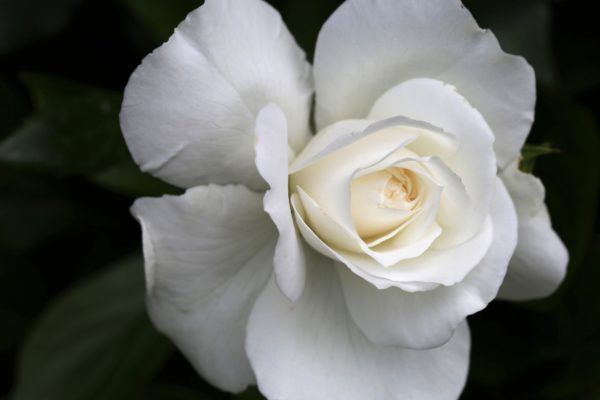
The Mother’s “flower-based” worldview involves developing increased refinement of the senses, the emotions, the intellect, and the spiritual heart where is hidden the intuition and other inchoate faculties that can indeed see, hear, and remember the divine self, “the whole” in all its “details.” Mother named almost 900 different flowers in her life. She named them according to the unique blend of divine forces she felt in their forms as well as their inner subtle characters. For instance, if a flower or plant manifested “power of perfect endurance,” as she called the Persian shield plant, she might have offered this to a student who either lacked this quality or possessed it. In either case, the goal was always to increase the progress of the soul or “psychic being” within that person towards the goal of supramental consciousness and material transformation.
She often gave flowers as a love-gift to her students, as encouragement, challenge, or blessing, for she found that flowers were incredibly receptive to one’s force of consciousness. Her sādhakas or spiritual students also gave her flowers, but this was a risky thing to do. She said, “When, therefore, you offer flowers to me, their condition is almost always an index of yours. There are persons who never succeed in bringing a fresh flower to me—even if the flower is fresh it becomes limp in their hands. Others however always bring fresh flowers and even revitalize drooping ones. If your aspiration is strong your flower offering will be fresh.”21
The Mother recommended communing with nature at specific times to revitalize one’s aspiration. She wrote,
When the sun sets and all becomes silent, sit down for a moment and put yourself into communion with Nature: you will feel rising from the earth, from below the roots of the trees and mounting upward and coursing through their fibres up to the highest outstretching branches, the aspiration of an intense love and longing,—a longing for something that brings light and gives happiness, for the light that is gone and they wish to have back again. There is a yearning so pure and intense that if you can feel the movement in the trees, your own being too will go up in an ardent prayer for the peace and light and love that are unmanifested here.22
The Mother was paradoxically inviting one to physically see nature in the dark. There and then aspiration and its stimulus to growth occurs. Of course, it is true that the light of the sun helps plants to grow. The Mother made the obvious observation that “plants need sunlight to live.”23 However, her point is about the indispensable role of darkness in the growth of a plant. This is instructive when trying to describe spiritual progress and the way she guided her own spiritual students. She is known for placing her students “in the dark” to awaken more intense aspiration for the divine and subsequent divinization of the body in beauty. With this flower-based worldview, we might say that the universal Mother as Mahākalī is doing the same at the cosmic level of creation.
Applying a Flower-Based Worldview
THE MOTHER’S “FLOWER-BASED” WORLDVIEW is not easy to adopt, for it requires two important understandings at the outset that usually cause a reaction in the ego: 1) the mind and the scientific instruments it needs are not capable of understanding the purpose of creation and how it grows because 2) this principle is hidden in the very things the mind abhors. The Mother’s teaching is that we are indeed experiencing a kind of universal dissolution and not only on a planetary scale, but on the unimaginable scale of creation itself. The problem, in other words, is not limited to our planet and is not ultimately human-made, though we human beings in our ignorance and false pride contribute to it just fine. For her, the problem is something more fundamental and tied to the very will of the Divine for the fulfillment of the psychic being. She constantly asked her students to face this squarely and with equanimity (samatā), to welcome the pralaya as it manifests in what the mental consciousness perceives as darkness, suffering, and evil. These are the experiences that hold the key to understanding growth and progress of the psychic being in the universe.
When speaking to her students about negative forces in the world, Mother controversially said, “evil, what we call ‘evil,’ has its INDISPENSABLE place in the whole.”24 For her, the growth of the whole only happens through the dynamic of reaction between the “details,” what the mind thinks are “evil” and “good” or “dark” and “light” rubbing up against one another. This friction sparks forward progress, progress of the psychic being into conscious union with the Divine (or “That” which is beyond good and evil) and then the psychic being into conscious union with the earth, the home of potential “perfection of form.” In a succinct way, she said “opposition and contraries are a stimulus to progress.”25 Just as with the growth of a flower or plant in places of darkness, with small progress, small amounts of opposition are needed, but for large progress an equally large measure of opposition is required. For what she and Sri Aurobindo called supramental progress, when they said the human species will grow beyond the limits of the mind and the psychic being materialize as a human body, an unprecedented counterforce will fuel the development.

In a similar understanding, in what Meher Baba called “the law of reaction,”26 he would often create opposition to his own spiritual work based on this principle. In other words, he would strategically invite or even author something “evil” to happen because he viewed it as the precious energy needed to achieve his desired outcome. In a striking image that captures this progressive growth dynamic, he said, “The more the bow string is drawn back, the greater the force for the arrow to fly farther…. The greater the opposition, the greater the force to my work; and for the welfare of humanity, as all my work is, I don’t mind in the least.”27 Neither did the Mother, whose work encompassed creation as well. Sri Aurobindo said, “She has leaped an arrow from the bow of God,” drawn back by the extreme counterforce of death (Yama) so that she can reach the impossibly far target of supermind, bringing all of creation along for the ride.28
Like anyone who lived through the 20th century, the Mother witnessed the forces of death grow to unimaginable proportions. However, she interpreted events like the Holocaust or the Great Purge in the Soviet Union and unseen contrary events on the inner planes of consciousness as a manifestation of the universal dissolution of what she called the “old creation.” This is the creation in which the mind was birthed, nourished, and reached the end of its utility.
Simultaneously, beginning in the early part of the 20th century and more fully in the late 1950s through the early 1970s, she witnessed the blossom of a “new creation” and the start of an age of joy and universal kinship, but unfolding gradually through severe means: the reaction of the old against the new. She said our human nature “is still so crude that [it] needs extremes” to true its growth at every stage, and especially to true its growth into the new supramental creation. She continued: “That is what Sri Aurobindo said: For love to be true, hatred was necessary; true love could be born only under the pressure of hatred. That’s it. Well, one must accept things as they are and try to go further. That is all.”29 “Things as they are,” in her view, is that all growth is fueled by crude oppositions.
Beginning in the early part of the 20th century and more fully in the late 1950s through the early 1970s, the Mother witnessed the blossom of a “new creation” and the start of an age of joy and universal kinship, but unfolding gradually through severe means: the reaction of the old against the new.
In our context, we experience an extreme version of this principle where an old mental life is in process of dying and a new supramental life is beginning to take its place. However, the old will not go without a fight and the new cannot be strengthened without the contest. The Integral Yoga, in the effort to “accept things as they are and try to go further,” is a refined and unprecedented methodology to negotiate this conflictual growth dynamic in a self-conscious way, welcoming the principle that “opposition and contraries are a stimulus to progress.” The yoga is palliative care for a dying old world governed by the mind and simultaneously it is neonatal care for a vulnerable world just born, though guided by a completely new inner authority. In other words, the Mother’s yoga seeks to help the mind go as the supermind comes.
She said that she experienced this in her own body as the supramental forces ravaged it over many decades. She found that by August 1968, five years before she passed, the “vital and the mind [were] sent packing so that the physical may truly be left to its own resources.”30 Though this was an arduous process, she found that the body responded in “wonderful” ways.
In May 1970 she experienced another turning point, a sense in which the normal patterns of aging and dissolution were changing, and not just for herself, but as a potential for all who will come after. She said, “I was really miserable, you might say (I mean on the purely physical level: nausea and everything imaginable, CONSTANT, constant), and then it went like this (same gesture of slight reversal): a bliss… For the BODY.”
She continued, “You know, ordinary sight—gone; ordinary hearing—gone; capacity to work (Mother makes a gesture of writing)—gone. And it can ONLY come back in the true way, when … But I’ve had the proof that EVERYTHING can come back WONDERFULLY.”
She summed up the experience of “bliss in body” and the truing of the senses in this image of fashion and beauty: “It’s the MATERIAL Nature, the physical Nature, the material Nature, and she said, ‘I’ve put on the dress, I’ve put on YOUR dress—I’ve put on your dress to tell you that I’ve adopted it.’ It means that material Nature has adopted the new creation.”31
In other words—if we return to her work with flowers—the decomposition of the mind has fertilized the blossom of the supermind.
——
THE MOTHER’S MYSTICAL EXPERIENCE of the supramental forces on earth and the ways in which she experienced their influence on her body seems directly related to the kinds of changes that the Gapminder Foundation is tracking on the earth. These changes are miserable, yet there is evidence of real bliss. Like her, I suggest that we need a way to honor both the misery and the bliss as they oppose one another in “the law of reaction.” The Mother’s flower-based worldview offers this understanding and consolation. Just as darkness stimulates perfection of form in beautiful blossoms, ecological crisis, the Mother might say, stimulates a new supramental creation and humanity. The difficulty now is discernment of what parts of our being need to go and what parts need support to live. An overdramatic worldview and worry cannot discern this, but a mind led by supramental faculties can and eventually a supermind freed from any mental legacy.
Notes
All books by Sri Aurobindo cited below are from the Collected Works of Sri Aurobindo. Except for Mother’s Agenda, all books by the Mother cited below are from the Collected Works of the Mother.
- See Sir Monier Monier-Williams, A Sanskrit-English Dictionary (Delhi: Motilal Banarsidass Publishers, 2005), s.v. “pralaya,” “pra,” and “laya.”
- See the Mother, Questions and Answers 1953, p. 58.
- Mother’s Agenda, Vol. 4 (New York: Institute for Evolutionary Research, 1987), November 13, 1963, p. 378.
- The Mother, On Thoughts and Aphorisms, p. 166.
- My forthcoming book Mirra Alfassa: Mother of the Sri Aurobindo Āśrama & Apprentice to the Divine of Tomorrow (working title) will deal more fully with this topic in comparison to the teachings of Sri Ramakrishna and Meher Baba.
- The Mother, Questions and Answers 1956, p. 40.
- See Patrick Beldio, “Meher Baba’s Spirituality of Sustainability and Transformation,” Religion & Sustainability: Interreligious Resources, Interdisciplinary Responses, ed. Rita Sherma and Purushottama Bilimoria (New York: Springer, 2021).
- See Meher Baba, Discourses I (Myrtle Beach, South Carolina: Sheriar Foundation, 2007), p. 12.
- Hans Rosling, Anna Rönnlund Rosling, and Ola Rosling, Factfulness (London: Flatiron Books, 2018), Kindle location 3111/5342.
- See Isabel Wilkerson, Caste: The Origins of Our Discontents (New York: Random House, 2020).
- See https://www.gapminder.org and https://sdgs.un.org/goals; accessed 7.15.21. See also Ola Rosling’s compelling comments about these issues here: https://youtu.be/v7WUpgPZzpI; accessed 7.15.21.
- Hans Rosling, Anna Rönnlund Rosling, and Ola Rosling, Factfulness (London: Flatiron Books, 2018), Kindle location 684/5342.
- See https://www.gapminder.org/factfulness/instincts/; accessed 8.8.21.
- Mother’s Agenda, Vol. 9 (Paris: Institute de Recherches Évolutives, 1981), August 28, 1968, pp. 234–235. Emphasis in the original.
- The Mother, Questions and Answers 1929–1931, p. 132.
- The Mother, Questions and Answers 1950–1951, p. 166.
- The Mother, Questions and Answers 1956, p. 215.
- The Mother, Some Answers From the Mother, p. 438.
- Sri Aurobindo, Synthesis of Yoga, p. 414.
- The Mother, Questions and Answers 1957–1958, p. 195.
- The Mother, Questions and Answers 1929–1931, p. 132.
- The Mother, Questions and Answers 1929–1931, p. 72.
- The Mother, Questions and Answers 1957–1958, p. 211.
- Mother’s Agenda, Vol. 10 (Paris: Institute de Recherches Évolutives, 1981), November 19, 1969, p. 435. Emphasis in original.
- The Mother, On Thoughts and Aphorisms, p. 165.
- See Bhau Kalchuri, Lord Meher, online edition, p. 1712. https://www.lordmeher.org/rev/index.jsp?pageBase=page.jsp&nextPage=1712; accessed 8.6.2021.
- Ibid., p. 1450.
- Sri Aurobindo, Savitri, p. 427.
- The Mother, On Thoughts and Aphorisms, p. 199.
- Mother’s Agenda, Vol. 9 (Paris: Institute de Recherches Évolutives, 1981), August 28, 1968, p. 229.
- Mother’s Agenda, Vol. 11 (Paris: Institute de Recherches Évolutives, 1981), May 9, 1970, p. 187.
PATRICK BELDIO is a professor of comparative theology and religion at Marymount University and George Washington University in the Washington, DC metro area. He has been a student of the Mother and Sri Aurobindo since the early 1990s. His current book project features the Mother and her contribution to the Integral Yoga. Patrick is also a professional sculptor with a studio at the Franciscan Monastery in Washington, DC.
Subscribe to Collaboration
Collaboration explores the vision and work of Sri Aurobindo and the Mother, the theory and practice of Integral Yoga, and themes such as consciousness, emergence, and transformation. To subscribe, visit https://www.collaboration.org/journal/subscribe/

